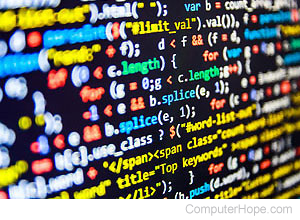Generation languages
A generation language may refer to any of the following:

1. The first generation languages, or 1GL, are low-level languages that are machine language.
2. The second-generation languages, or 2GL, are also low-level assembly languages. They are sometimes used in kernels and hardware drives, but are generally used for video editing and video games.
3. The third-generation languages, or 3GL, are high-level languages, such as C, C++, Java, JavaScript, and Visual Basic.
4. The fourth-generation languages, or 4GL, are languages that consist of statements similar to statements in a human language. Fourth generation languages are commonly used in database programming and scripts examples include Perl, PHP (PHP: Hypertext Preprocessor), Python, Ruby, and SQL (Structured Query Language).
5. The fifth-generation languages, or 5GL, are programming languages that contain visual tools to help develop a program. Examples of fifth generation languages include Mercury, OPS5, and Prolog.
Assembly, Generation, High-level languages, Low-level language, Machine language, Programming language, Programming terms
